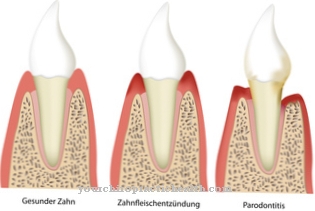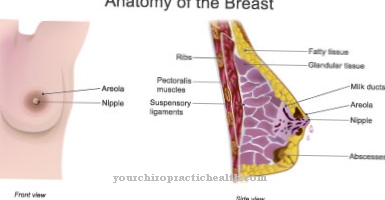Under one Intramedullary nail osteosynthesis is understood to be a surgical procedure for treating long bone fractures. With this method, the surgeon inserts an intramedullary nail into the medullary canal of the bone.
What is intramedullary nail osteosynthesis?

The intramedullary nail osteosynthesis is also called Intramedullary nailing known. What is meant is a surgical method in which an elongated metal pin such as a bone nail or intramedullary nail is inserted into the marrow of the damaged bone. In this way, a broken long bone is nourished by promoting callus formation and thus healing of the bone.
Long bones such as the thigh bones were fixed in an intramedullary manner from 1887 onwards. In 1916, some doctors also resorted to bones from cattle or ivory. In 1925 the three-lamellar nail was introduced, which was used for fractures of the femoral neck. In 1940, the German surgeon Gerhard Küntscher (1900-1972), who is considered the inventor of intramedullary nailing, sparked heated controversy when he presented his intramedullary nail at a conference of the German Society for Surgery. At the time, the bone marrow was considered inviolable and irreplaceable for bone vitality.
Over the years intramedullary nail osteosynthesis has been able to convince with therapeutic success. This allowed the injured limb to be loaded more quickly with the intramedullary nail, which shortened the hospital stay. The patient's ability to work could also be restored more quickly. In contrast, the other treatment methods harbored numerous complications that were now avoided with intramedullary nail osteosynthesis.
In the 1950s, reamed intramedullary nailing was introduced, which developed into the standard method for treating broken shafts in the tibia. Although it is not necessary from a medical point of view, the intramedullary nail is removed after the fracture has healed. So its locking screws can have a disruptive effect.
Function, effect & goals
Nowadays, intramedullary nails made of inert titanium are used. With the help of these implants, static or dynamic locking and compression on the gap in the fracture can be achieved.
Indications for intramedullary nail osteosynthesis are open or closed fractures of large tubular bones such as the shinbone, femur, and humerus. Intramedullary nail osteosynthesis is also useful for special treatments. Various special implants with special properties are available for this purpose.
The most common areas of application for intramedullary nail osteosynthesis are short oblique or transverse fractures such as those on the thigh. The first step in the procedure is to reduce the bone. The surgeon brings bone fragments that have shifted back to their original position. Depending on how long the fracture is, the surgeon guides the intramedullary nail over a small incision from the end of the bone to the inside of the bone.
In intramedullary nail osteosynthesis, a distinction is made between two different procedures. These are the unreamed and the reamed intramedullary nail. If a reamed intramedullary nail is used, the first thing the surgeon will do is drill the medullary canal of the bone. The next step is to drive an elongated hollow nail into the medullary canal. If, on the other hand, an unreamed intramedullary nail is used, the medullary canal does not need to be reamed. The surgeon also uses a massive nail that is thinner. The undrilled intramedullary nail is used to treat severe open fractures.
The use of an unbored nail can protect the blood vessels in the bone marrow. New bone substance is produced through the medullary canal and the bone is supplied with blood. If the medullary canal is injured by a reamed nail, this is often disadvantageous for the healing process.
There are also differences between the intramedullary nail types in terms of locking. A locking screw is absolutely necessary for an unreamed nail, while the locking of the drilled nail is optional. Locking refers to the fixation of the intramedullary nail at one end of the bone with bolts or screws. Doctors differentiate between static and dynamic locking.
As part of the static locking, the intramedullary nail is fixed at both ends, which ensures a stable connection.This prevents the bone fragments from yielding. In the case of dynamic locking, the nail is only attached to the bone end near the fracture. The connection is therefore less rigid. The surgeon decides which type of nail is ultimately more suitable based on the extent, shape and position of the fracture.
Risks, side effects & dangers
Despite its numerous advantages, intramedullary nail osteosynthesis can also cause some complications. These include primarily pseudarthrosis and misalignments. Pseudarthrosis is when the bone does not heal after an operation.
It is also known as a pseudo-joint or a sham joint. The bones affected by pseudarthrosis are mostly the upper and lower leg bones. The complication becomes noticeable through chronic pain and constant functional limitations. In addition, the mobility of the affected limb is considered abnormal. Another osteosynthesis usually has to be performed for treatment.
Another common complication of intramedullary nail osteosynthesis is primary or secondary malalignment. External rotational misalignments can occur when using reamed as well as unreamed intramedullary nails. The reason for this is usually an incorrect execution of the intramedullary nail osteosynthesis by the surgeon. In rare cases, a broken bolt can also cause a primary malposition.
Other possible complications include fat embolisms, infections or failure of the implant. The risk of infection is particularly high with open fractures. An implant failure is when a broken bolt or a fracture of the intramedullary nail occurs.
Typical & common bone diseases
- osteoporosis
- Bone pain
- Broken bone
- Paget's disease
Books on bones & osteoporosis

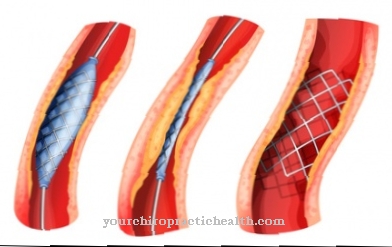






.jpg)


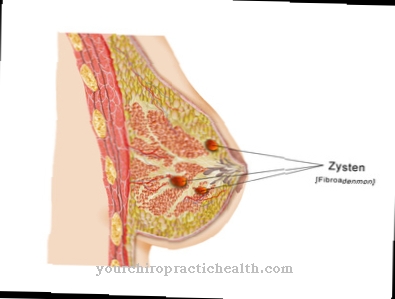



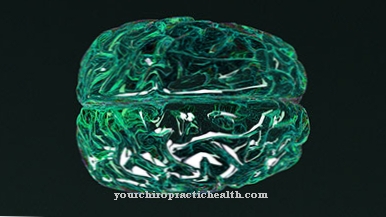
.jpg)



.jpg)
